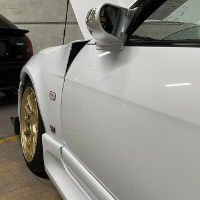R33 Sii - My Gt30 Upgrade Is Done. Lots Of Pics
Announcements
-
Similar Content
-
Latest Posts
-
By joshuaho96 · Posted
Kind of surprising, with cars this old I've seen a lot of them suffer from high idle due to internal vacuum leak. Fuel trims look fine but the cold start valve just wore out from all the heat cycles and won't close up all the way. Rather notorious issue in some models of the Toyota 4Runner: -
By welshy_32ZILA · Posted
I feel like the rpm the torque converters are set to also probably match the factory power output and turbo etc. Also considering component wear and longevity for warranty purposes. -
Will do. Car just came out of the shop so will wait 3 weeks to go to the body shop. Still working on my motor.






Recommended Posts
Create an account or sign in to comment
You need to be a member in order to leave a comment
Create an account
Sign up for a new account in our community. It's easy!
Register a new accountSign in
Already have an account? Sign in here.
Sign In Now